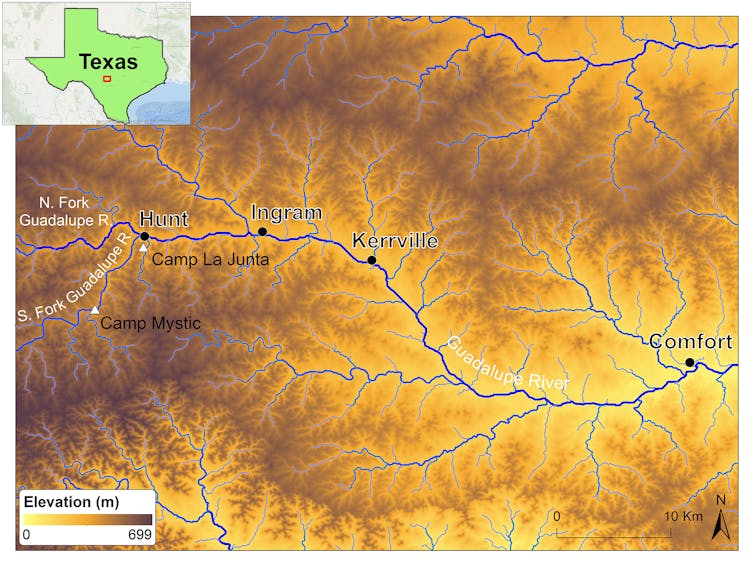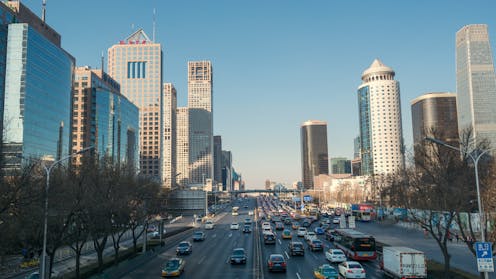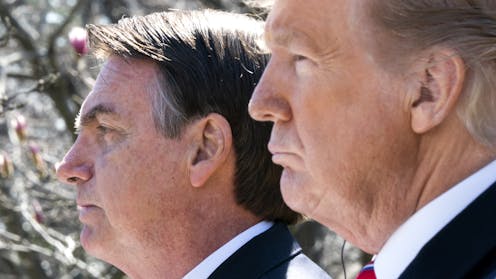Source: The Conversation – UK – By Bing Han, Lecturer in Economic Crime, University of Portsmouth

At the beginning of 2025, panic about fraud and human trafficking erupted on Chinese social media. It started when a Chinese actor called Wang Xing was tricked into travelling to Thailand for an audition, where he was abducted by criminals and taken to a scam centre in Myanmar.
Wang was reported missing and, within three days, the Thai police had located and returned him to Thailand. Details of the operation were not revealed, leading to speculation that withholding more information was part of a deal that led to Wang’s release.
Inside the compound, Wang’s head was shaved and he told the police he was forced to undergo the first phase of training on how to carry out scams.
Read more:
Scam Factories: the inside story of Southeast Asia’s brutal fraud compounds
One such scam is known as “pig butchering”. This type of scam began attracting attention in China around 2019, and is typically carried out by Chinese organised crime groups. Scammers establish fake romantic and trusting relationships with victims before luring them into fraudulent investments or other financial traps.
Pig-butchering scammers have stolen billions of dollars from victims worldwide. In one notable example from 2023, a banker from Kansas in the US called Shan Hanes embezzled US$47 million (£34.6 million) from his bank to cover his losses after falling victim to a pig butchering scam. Hanes was subsequently sentenced to more than 24 years in prison. So, what do we know about how pig butchering scams work?
Get your news from actual experts, straight to your inbox. Sign up to our daily newsletter to receive all The Conversation UK’s latest coverage of news and research, from politics and business to the arts and sciences.
A pig butchering scam consists of three stages: hunting, raising and killing. These stages correspond to scammers finding victims online, talking with them to build trust and then getting them to invest large amounts of money in fraudulent schemes.
There are some similarities between a pig butchering scam and a traditional romance scam. Scammers may, as in a traditional scam, approach their victims by posing as a possible romantic partner on a dating app or a friend on social media.
But the key difference lies in how the scam is executed. In a traditional romance scam, trust is based on the victim’s desire to maintain a romantic relationship with the scammer. Because of this, traditional romance scams can sometimes last for years.
Pig butchering scams, in comparison, generally take place over a shorter time frame. Rather than focusing on extracting money solely through emotional manipulation, they lean heavily on the victim’s desire to make money together with the scammer. They often involve just a few months of talking with the victim.
The scammers present themselves as financially successful and confident people with broad networks and attractive investment opportunities. Once a victim makes a small initial investment, scammers rapidly escalate the process and push them into making much larger financial commitments.
In one example from 2024, a woman in the US state of Connecticut called Jacqueline Crenshaw met a man on an online dating site. He was posing as a widower with two children and frequently spoke with Crenshaw over the phone. Within two months, they began discussing investing in cryptocurrency.
Crenshaw sent him US$40,000 (£29,500) initially and received screenshots from him showing supposedly huge profits from the cryptocurrency investment. The scammer soon encouraged Crenshaw to invest much more, which ultimately led to her losing nearly US$1 million (£738,000).
Organised crime groups
Pig butchering scams are typically run by highly organised criminal groups. These groups have management teams, provide training to new recruits and often hire people as models who occasionally interact with victims.
The Chinese government has taken several steps to combat fraud in recent years. It enacted the Anti-Telecom Fraud Law in 2022, which was designed specifically to prevent and punish the use of telecommunications and internet technologies to defraud individuals and organisations. It was introduced in response to the growing prevalence of pig butchering scams in China.
The Chinese Ministry of Public Security has also developed a mobile application called the National Anti-Fraud Center App. The app allows the public to report scams and access real-time risk alerts related to fraud. Alongside the work of other government departments, it has helped intercept 4.7 billion scam calls and 3.4 billion fraudulent text messages since the beginning of 2024.
The crackdown on fraud within China has made it more difficult for criminal groups to operate domestically, prompting many to relocate their bases abroad. South-east Asian countries – particularly Cambodia, Laos and Myanmar – have become a preferred destination for such groups.
Regions of northern Myanmar, such as Kokang and Wa State, have become breeding grounds for organised fraud over the past few years. Chinese is widely spoken in both of these areas and local customs closely resemble those in China.
This has been exacerbated by persistent corruption in border areas, poor governance and instability. The collapse of the illegal online gambling industry in south-east Asia following the pandemic has also led crime groups to search for new sources of revenue. These conditions have together facilitated the proliferation of large-scale fraudulent operations.
Organised fraud has evolved into a key pillar of the local economy in certain parts of south-east Asia. The profits generated from online scams are estimated to amount to 40% of the combined GDP of Cambodia, Laos and Myanmar.
Criminal leaders have established tightly controlled compounds that serve as hubs for online scams, with their primary activities centred on pig butchering. These compounds are frequently presented as “technology parks”, which helps recruit workers. However, many people are forced to work in the scam centres.
Pig butchering scams can inflict severe financial harm on victims. But are also closely tied to violent crime, human trafficking and other forms of organised criminal activity. They pose a growing threat to regional and global security.
![]()
Bing Han does not work for, consult, own shares in or receive funding from any company or organisation that would benefit from this article, and has disclosed no relevant affiliations beyond their academic appointment.
– ref. ‘Pig butchering’ scams have stolen billions from people around the world. Here’s what you need to know – https://theconversation.com/pig-butchering-scams-have-stolen-billions-from-people-around-the-world-heres-what-you-need-to-know-252774








